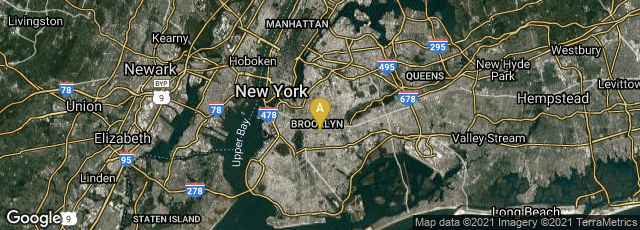

A: Brooklyn, New York, United States
In 1957 electrical engineer Max Mathews of Bell Labs wrote MUSIC, the first widely-used program for sound generation, on an IBM 704 computer. MUSIC was the first computer program for generating digital audio waveforms through direct synthesis. Prior to this the first computer music was generated in Sydney Australia in 1951 by programmer Geoff Hill on the CSIRAC computer, which was designed and built by Trevor Pearcey and Maston Beard. However, CSIRAC produced sound by sending raw pulses to the speaker; it did not produce standard digital audio with PCM samples, like the MUSIC-series of programs. Additional computer music was generated on the Ferranti Mark 1, in November 1951.
At "Horizons in Computer Music", March 8–9, 1997, at Indiana University in Bloomington Matthews described his work in parental terms:
Computer performance of music was born in 1957 when an IBM 704 in NYC played a 17 second composition on the Music I program which I wrote. The timbres and notes were not inspiring, but the technical breakthrough is still reverberating. Music I led me to Music II through V. A host of others wrote Music 10, Music 360, Music 15, Csound and Cmix. Many exciting pieces are now performed digitally. The IBM 704 and its siblings were strictly studio machines – they were far too slow to synthesize music in real-time. Chowning's FM algorithms and the advent of fast, inexpensive, digital chips made real-time possible, and equally important, made it affordable. Starting with the GROOVE program in 1970, my interests have focused on live performance and what a computer can do to aid a performer. I made a controller, the Radio-Baton, plus a program, the Conductor program, to provide new ways for interpreting and performing traditional scores. In addition to contemporary composers, these proved attractive to soloists as a way of playing orchestral accompaniments. Singers often prefer to play their own accompaniments. Recently I have added improvisational options which make it easy to write compositional algorithms. These can involve precomposed sequences, random functions, and live performance gestures. The algorithms are written in the C language. We have taught a course in this area to Stanford undergraduates for two years. To our happy surprise, the students liked learning and using C. Primarily I believe it gives them a feeling of complete power to command the computer to do anything it is capable of doing. (Quoted in the Wikipedia article on Max Matthews, accessed 9-2020).